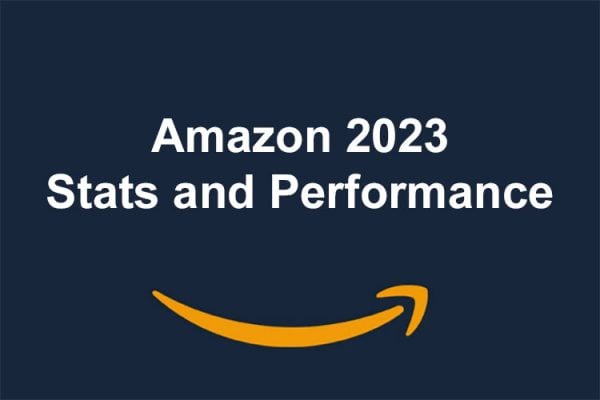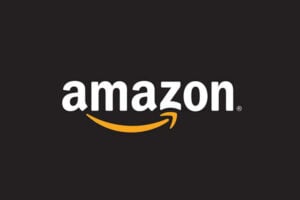There comes a time when every business comes to an end for the current owner and usually this is when they decide to sell their business. At this point it’s usually too late to add value and realise the best possible sale price and that certainly holds true when the time comes to sell your Amazon business.
 Preparing to sell your Amazon business isn’t simply sending your previous few year’s accounts to a potential acquirer, at least not if you want to achieve top dollar for your years of hard work. Today, Mark Daoust, CEO and Founder of Quiet Light Brokerage, a business that specialises in selling Amazon Businesses on behalf of owners, discusses how to build value in your Amazon business and why you should start planning to sell it today to give yourself options in the future.
Preparing to sell your Amazon business isn’t simply sending your previous few year’s accounts to a potential acquirer, at least not if you want to achieve top dollar for your years of hard work. Today, Mark Daoust, CEO and Founder of Quiet Light Brokerage, a business that specialises in selling Amazon Businesses on behalf of owners, discusses how to build value in your Amazon business and why you should start planning to sell it today to give yourself options in the future.
How to sell your Amazon business
While the goal of any entrepreneur who is building a business on Amazon’s marketplace should be to grow and develop their business, there inevitably comes a time when you might think about selling your business or being acquired.
But how do you sell you Amazon business? What makes it valuable? Most importantly, what can you do to maximize its value?
Here’s How Much Your Business is Worth Today
Although there are a lot of different approaches to valuing a business, the most common approach used is the earnings multiplier approach. It looks like this:
Your business’s anticipated value = Last 12 Months Discretionary Earnings x Some Multiple
-
Discretionary earnings
This is your business’s EBIDTA (Earnings before interest, taxes, depreciation and amortization), plus one owner’s benefit, true one-time expenses, and non-related income or expenses.
-
Some multiple
This is determined by the general economy plus your business’s overall health.
-
Anticipated value
Any valuation formula exists to predict what a buyer might be willing to pay for your business. It does not determine your business’s value.
Some people criticize this approach as not being comprehensive.
Where do you account for the value of your vendor relationships? Your business’s growth? Or anything else that makes your business unique?
The answer is simple: in the Multiple.
The Four Pillars of Value for an Amazon Business
In the formula above, there are two basic parts: your earnings, and a multiple.
While your earnings are fairly easy to understand, a lot of people do not understand what multiple their business should receive.
The fact is, the multiple your business receives will likely be significantly different from other similar businesses.
So what determines your multiple?
There are two influencing factors: the general marketplace, and your business’s relative strengths/weaknesses.
While the general marketplace tends to establish a broad range of multiples that an Amazon could sell for, your specific business’s multiple is determined more by it’s strengths and weaknesses as compared to other businesses for sale.
For any particular business, these strengths and weaknesses will be different. Fortunately, you can typically sum up these strengths and weaknesses in to four general categories, or pillars, that help determine how valuable your business is compared to others:
-
Risk Exposure
Buyer’s acquire businesses because they want to generate a positive return on investment. Because of this, risk is a serious consideration. If your business is not protected from competition, or relies too heavily on one vendor, or has other areas of risk, this will significantly hurt your business’s value (or make it unsellable).
-
Growth Prospects
Once again, buyers buy Amazon businesses because they want to see a positive ROI. As such, real, tangible growth prospects are key to getting more value from your business. If your business is growing naturally, with your marketplace, this is usually the best growth indicator a buyer can see.
-
Transferability
How easy is it for someone else to run your business and take over it’s day to day operations? How key are you to running the business? If you make your business so simple to run that anyone can do it, you will increase its value as more buyers will be potential acquirers. On the other hand, if it is so specialized that only a few buyers could run it, it’s value will be greatly diminished.
-
Documentation
This is the most often ignored pillar. Having clean, clear, and independently verifiable financial records, contracts, standard operating procedures, and reports can add significant value to your business. Poor documentation can lead buyers to wonder what they don’t know about your business and increase the perception of risk.
Plan to sell your Amazon business
Finally, to maximize the value of your Amazon business, you should plan to sell, not decide to sell. Business owners who put a plan in place to one day sell their business get significantly more money than those who just wake up one day and decide to sell.
If you do plan to sell, that doesn’t mean you have to sell, it just means you are prepared and have options.











One Response
Very true in that you need a get out plan!!
We are in the process of buying a business in the US (A B&M retail business in a mall selling pretty much the same type of stock as i do over here in the UK).
We are at the start of the process, so working out the valuation of the business is always the tricky bit:
Working out the value of the business, would normally constitute the following elements:
• Stock
• Equipment, Fixture & Fittings
• Lease
• Goodwill
With stock, we would probably purchase all remaining stock on an agreed % of cost basis, with a stock check being carried out at time of handover, which would enable the seller to hold liquidation sales if you so wish right up till handover. In essence, we would not cherry pick, but take all remaining stock.
Equipment, Fixture & Fittings – This will be on an offer basis, inc depreciation.
Lease – Not worth what they used to be and can significantly decline to low value if there are plenty of other places within the mall to move the business to.
Goodwill is less tangible and harder to get a figure on, especially with the decline in B&M sales in general, however I am aware that they will have a loyal customer base for some of the ranges they sell which they have built up, so will need to be taken into consideration.
At the end of the day, its always going to be figure that both parties are going to be happy with.